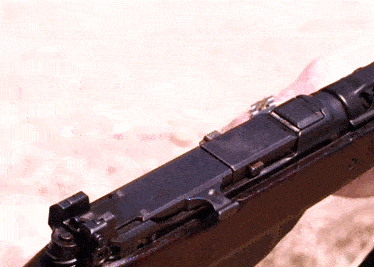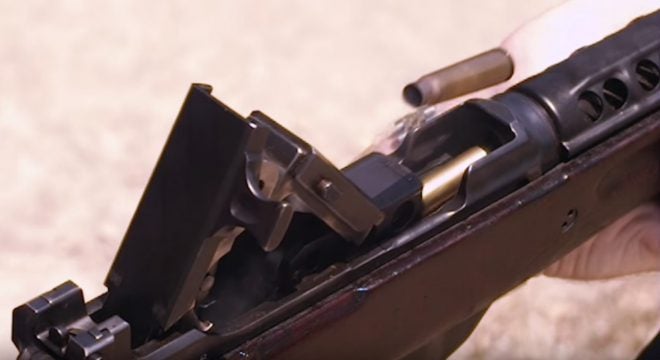What makes an automatic (or semiautomatic) weapon work? How do these weapons accomplish being able to fire round after round through a single barrel with no interference from the operator? That’s what I aim to explain in this series, which hopefully will give my readers a brief and readily accessible foundation on firearms operating mechanisms. For some of you, many of these articles will not tell you anything you don’t already know, but be patient: I plan to be very thorough in my coverage of different operating mechanisms. The scope of this series will be the operating mechanisms of single-barreled firearms, minus their feeding mechanisms (which I will cover separately).

Slow motion footage of a Pedersen rifle completing a full cycle of operation. Note the firing, extraction and ejection of the spent case, and feeding of the next round.
First, though, we need to explain what is happening generally-speaking when an automatic* firearm is operating. Therefore, we’ll need to define some terms:
- The barrel is the primary pressure-bearing element, which also directs the bullet downrange and, if rifled, spins the bullet to stabilize its flight. The uprange end of the barrel contains the chamber, where ignition of the cartridge takes place.
- The breech is the closed end of the barrel that contains the rearward pressure created by the cartridge. In almost all automatic firearms it is a movable piece, to allow reloading of the chamber.
- The moving parts group is the mechanism which uses motion to accomplish repeated fire from a single barrel, in conjunction with a feeding device. Some single-barrel multishot firearms do not use a moving parts group, but we’ll cover them later. The moving parts group often – but not always – also incorporates the breech.
- The feed mechanism is the device which presents fresh cartridges to the operating group. For the purposes of this series, we will be mostly ignoring how feeding is accomplished.
- The fire control group is the mechanism which is capable of repeatedly activating cartridges once they have been feed from the feed mechanism into the barrel by the moving parts group. Fire control groups will become a much bigger subject later on in the series.
- A cycle is one complete round of fire, from igniting a cartridge all the way to just before ignition of the next cartridge. This word cycle also gives us the term “cyclic rate of fire”, meaning the rapidity with which the firearm can complete repeated cycles.
We’ll cover more definitions as the series carries on. Stay tuned for the first episode, on the blowback operating mechanism!
*Note: For the purposes of this series, we will wrap up fully automatic and semiautomatic firearms together under the label “automatic”, unless distinction is needed.
 Your Privacy Choices
Your Privacy Choices
